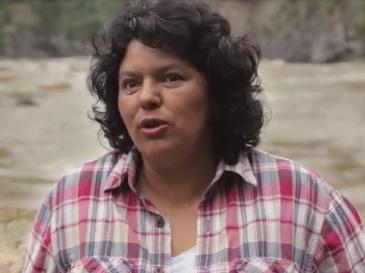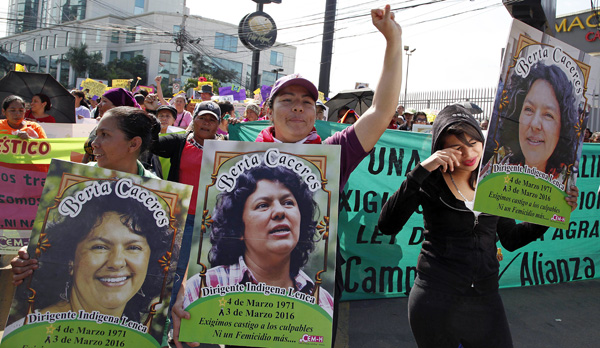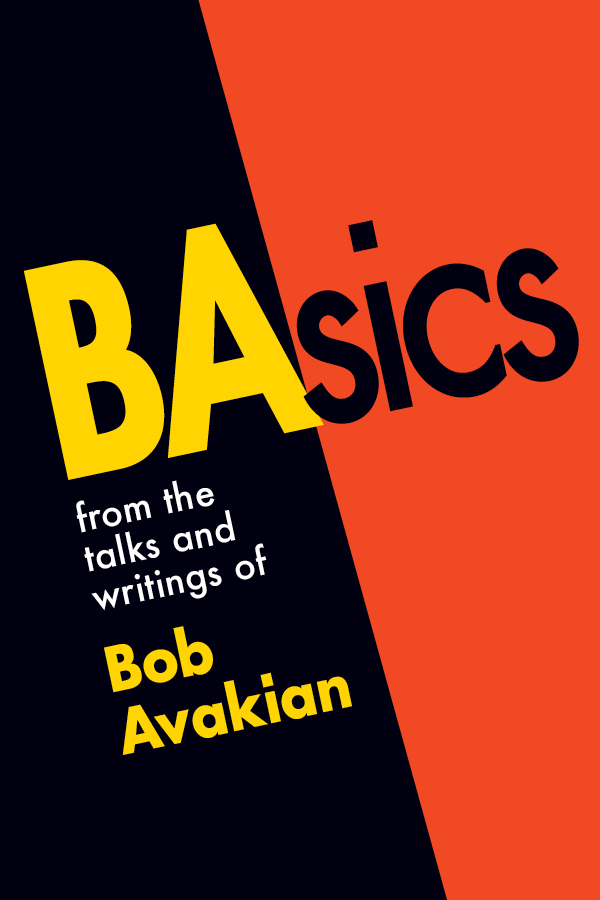Reposted March 8, 2017 | Revolution Newspaper | revcom.us
On March 3, 2016, the internationally renowned Honduran environmentalist Berta Cáceres was assassinated in her home. On the anniversary of her killing, the The Guardian has reported that “leaked court documents raise concerns that the murder of the Honduran environmentalist Berta Cáceres was an extrajudicial killing planned by military intelligence specialists linked to Honduras’ US-trained special forces.” Three of the eight men charged with her murder were military Special Forces officers; one who was chief of army intelligence at the time of the assassination. He and another one of the officers had been trained in the U.S. (“Berta Cáceres court papers show murder suspects’ links to US-trained elite troops,” Nina Lakhani, 2/28/17)
Shortly after Cáceres’ murder, A World To Win News Service wrote the article which follows—“Who Killed Berta Cáceres?”—which provides important background and analysis about her murder, and the potential role of the U.S. in her killing.
* * * *
From A World to Win News Service
Honduras: Who killed Berta Cáceres?
March 14, 2016 | Revolution Newspaper | revcom.us
March 7, 2016. A World to Win News Service. On March 3, 2016, gunmen broke into the home of Berta Cáceres and shot her four times as she slept.

Berta Cáceres
A co-founder of the Council of Indigenous People of Honduras, Cáceres was a leader of a campaign against the building of four dams on the Gualcarque River, a hydroelectric project launched by the World Bank meant to attract massive foreign investment in the mining industry, now allotted almost a third of the country’s land. She had received messages of support from international human rights organizations, environmental NGOs and Catholics abroad, although not the Catholic hierarchy in Honduras. She was part of a group that met with the Pope. Last year she received the Goldman Environmental Prize, sometimes called “the green Nobel prize.” Even the U.S. ambassador to Honduras called for an investigation after her death.
But such an investigation, if it were anything but a whitewash, would have to begin with the ambassador looking in the mirror. Students confronting riot police later that day in Tegucigalpa, the Honduran capital, blamed the U.S. government. Everyone knew that the army was going to kill Berta Cáceres—she said so, publicly—and the Honduran army is trained, armed, financed and backed to the hilt of their bayonets by the United States.

Women honor Berta Cáceres on International Women's Day, March 8, in Tegucigalpa, Honduras. (AP Photo/Fernando Antonio)
She was supposedly under government protection, but after she died, in her home in her village, officials claimed they couldn’t have saved her because they didn’t know how to find her. Immediately after her death the police announced that they considered it a case of robbery and not assassination. This alone makes it likely that the authorities, and particularly the army, were behind her murder, as her mother said. The police, too, are U.S. funded. The U.S. calls the shots in Honduras.
The army is known to have been planning to kill Cáceres at least since 2009, when it overthrew a president who had talked about closing the key American military base in Central America. At the time, the Obama government and its State Department were accused of organizing the coup. What is undeniable is that the U.S. never stopped supporting the military and the regime it brought to power. Obama’s Secretary of State, [Hillary] Clinton, personally intervened to keep other Latin American countries from taking diplomatic measures against the new government, whose main ministries were occupied by military men who had graduated from the U.S. Army School of the Americas [Western Hemisphere Institute for Security Cooperation]. Catholic activists and others have long called it “the school of coups,” because so many of its alumni have stepped in to remove governments that the U.S. finds inconvenient. It has also been called “the school of torture” and “the school of terror” because of the methods taught by its instructors in Fort Benning, Georgia.
Shortly after that coup, the Inter-American Commission on Human Rights named Cáceres as one of the people on an army death list. In a December 24, 2013 television interview, she told Al Jazeera, “The army has an assassination list of 18 wanted human rights fighters with my name at the top. I want to live, there are many things I still want to do in this world but I never once considered giving up fighting for our territory, for a life with dignity, because our fight is legitimate. I take lots of care but in the end, in this country where there is total impunity, I am vulnerable... When they want to kill me, they will do it.”
Her fellow leader of the Council of Indigenous People, Tomás Garcia, was shot dead by a military officer at a demonstration in 2013. Between 2010 and 2014, 101 Honduran social movement activists were killed.
These were political assassinations, but Honduras has become a more murderous place in every way. Greater subjugation to North American and European capital and further integration into the world market, under a government brought into power and kept in power to accomplish that aim, has created a situation in which many Hondurans consider entering the U.S. their only realistic escape.
As small as Honduras may be and as poor as U.S. domination has kept it, it has played a strategic role for the U.S. military in Central America. During the 1980s the U.S. unleashed its “Contra” killers (the “civilian contractors” of that era) against the Sandinista regime that had overthrown a long-time U.S. puppet in Nicaragua in a war financed by CIA-organized drug traffic. That mercenary army and the American military and civilian officials who ran it were based in Honduras. The drug trade and gangsterism that plague Honduras today are rooted in that era.
All major politicians in the U.S., in the presidential campaign and Congress, proclaim that Hondurans, like other immigrants, are a big problem for the United States. But to a large extent, they are literally fleeing from U.S. guns. The problem is the USA.
Volunteers Needed... for revcom.us and Revolution
If you like this article, subscribe, donate to and sustain Revolution newspaper.

 The essence of what exists in the U.S. is not democracy but capitalism-imperialism and political structures to enforce that capitalism-imperialism. What the U.S. spreads around the world is not democracy, but imperialism and political structures to enforce that imperialism.
The essence of what exists in the U.S. is not democracy but capitalism-imperialism and political structures to enforce that capitalism-imperialism. What the U.S. spreads around the world is not democracy, but imperialism and political structures to enforce that imperialism.





